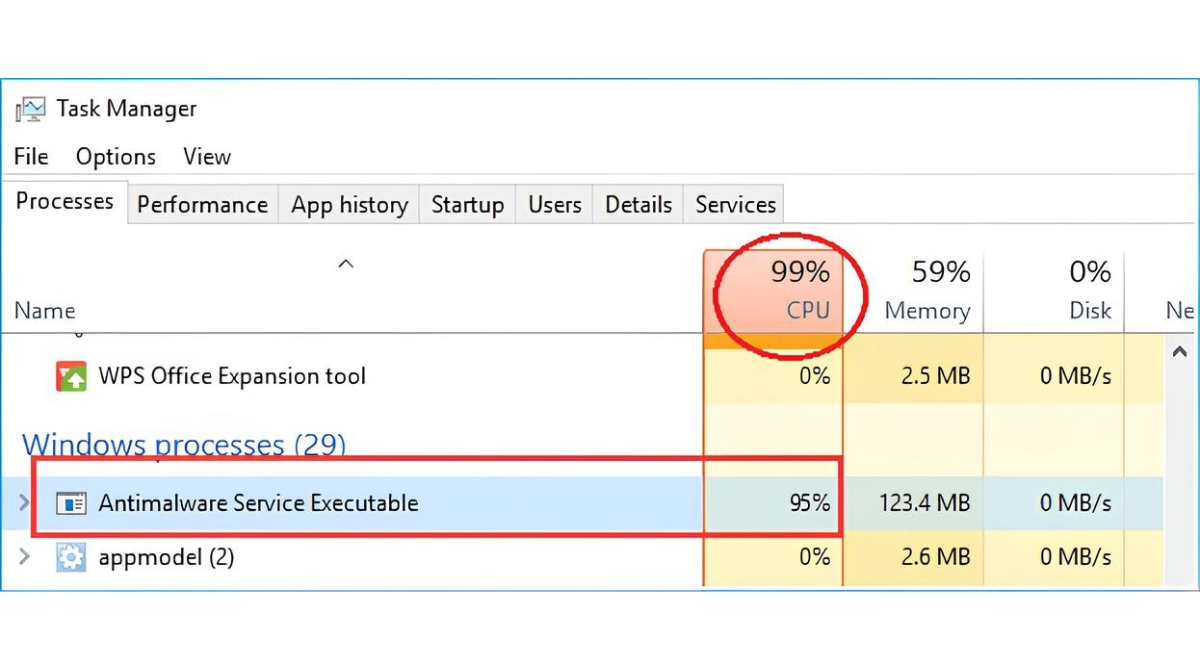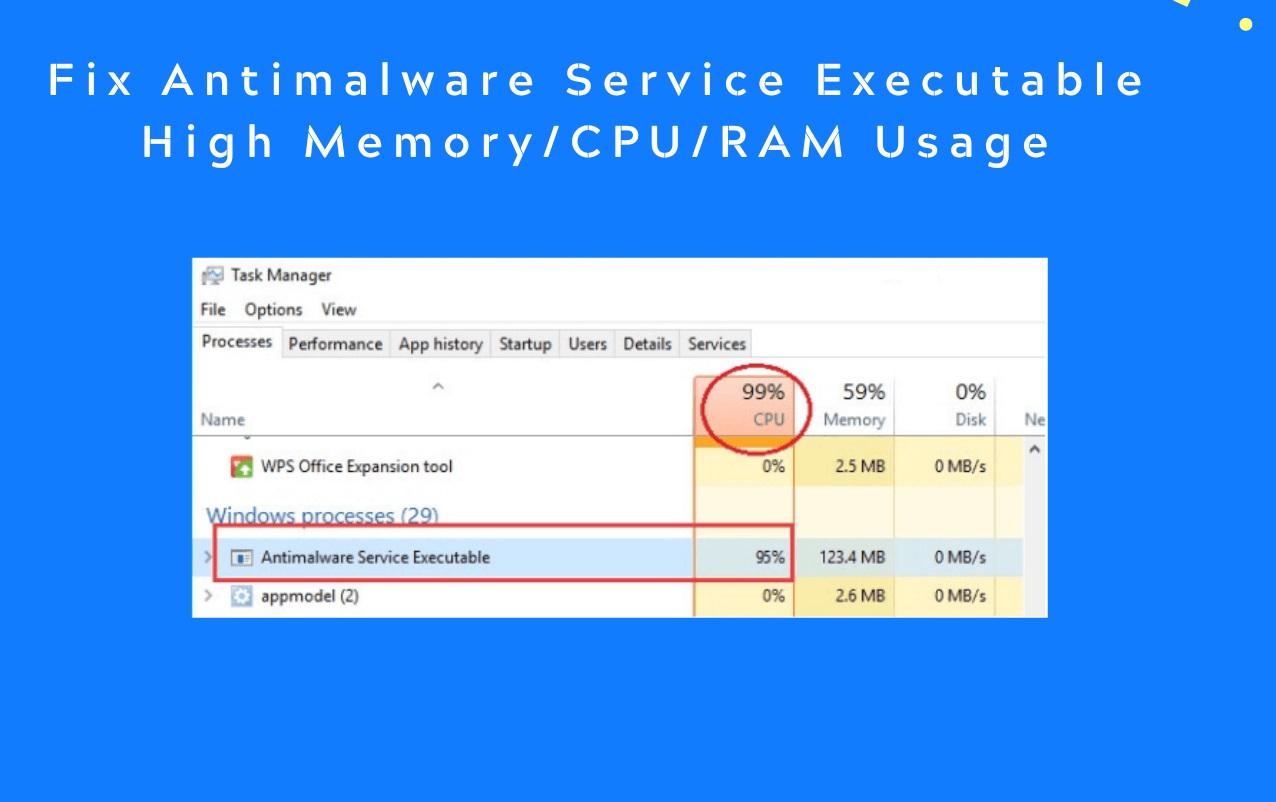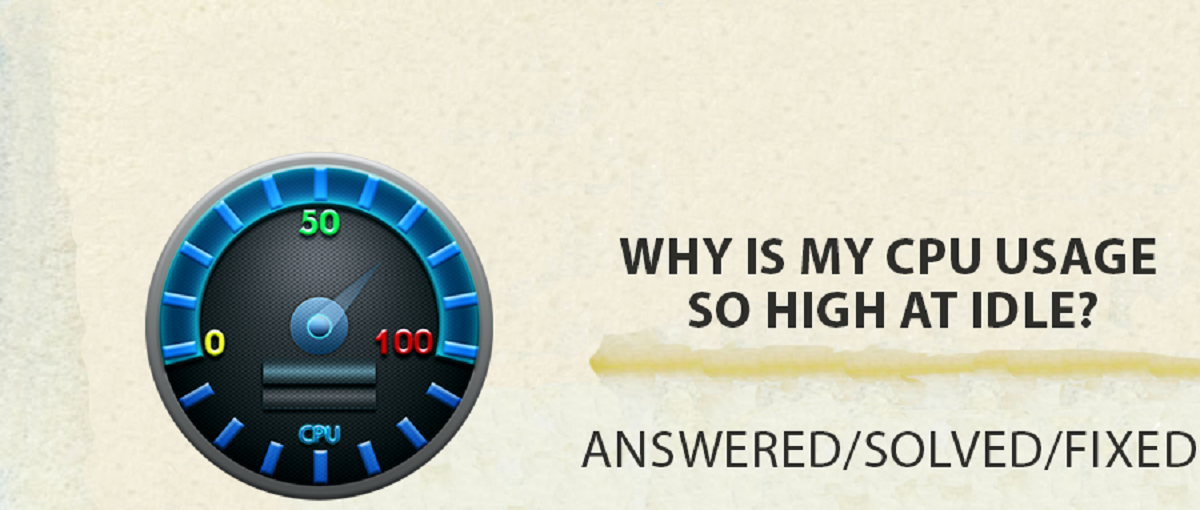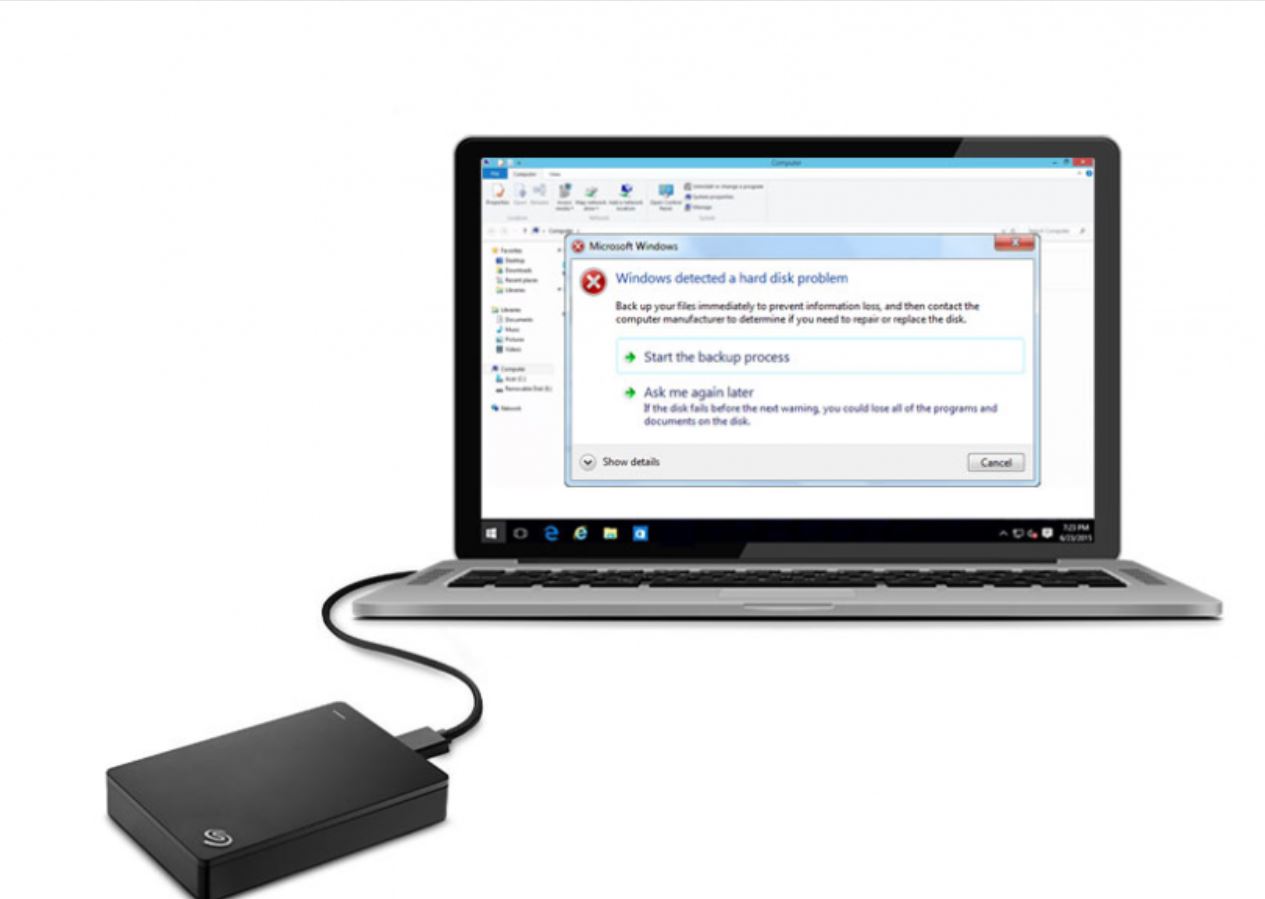Introduction
Welcome to our guide on how to stop Antimalware Service Executable from using excessive RAM. If you’re experiencing high RAM usage on your computer, particularly caused by Antimalware Service Executable, you’ve come to the right place. In this article, we will explore what Antimalware Service Executable is, why it consumes so much RAM, and most importantly, how you can resolve this issue.
Antimalware Service Executable, also known as MsMpEng.exe, is a core component of Windows Defender, the built-in antivirus and antimalware solution provided by Microsoft. Its primary function is to scan and protect your system from viruses, malware, and other security threats.
While having a robust antivirus solution like Windows Defender is essential for computer security, it can sometimes lead to high resource usage, particularly RAM. This can cause your system to slow down or freeze, affecting your overall productivity.
In this guide, we will provide you with several solutions to help you mitigate this issue. These solutions will enable you to reduce the amount of RAM consumed by Antimalware Service Executable, thus improving the overall performance of your computer.
Please note that some of these solutions involve adjusting the settings of Windows Defender, while others consider alternative antivirus software. While we recommend trying the Windows Defender-related solutions first, you may find that using a third-party antivirus software is a more suitable option for your needs.
Without further ado, let’s dive into the various methods to stop Antimalware Service Executable from using excessive RAM and get your system running smoothly again.
What is Antimalware Service Executable?
Antimalware Service Executable, also known as MsMpEng.exe, is an essential component of Windows Defender, the built-in antivirus and antimalware software included in Windows operating systems. Its role is to provide real-time protection against various security threats, including viruses, spyware, ransomware, and other malicious software.
When Windows Defender is actively scanning your computer or monitoring files and processes for potential threats, the Antimalware Service Executable process is running in the background. This process is responsible for performing the scanning and analysis of files, ensuring the security and integrity of your system.
Antimalware Service Executable utilizes various techniques and algorithms to detect and block potential threats. It constantly updates its malware definitions database to stay up to date with the latest security risks, ensuring that your computer is protected against emerging malware threats.
One of the primary functions of Antimalware Service Executable is real-time protection, which continuously monitors your system for suspicious activities. It scans files and processes in real-time, blocking or quarantining anything that appears to be malicious.
Windows Defender also includes scheduled scans that run at predefined intervals to conduct in-depth scans of your computer. These scheduled scans help detect and remove any potential threats that may have slipped through real-time protection.
It’s worth noting that while Antimalware Service Executable plays a crucial role in maintaining the security of your computer, it can sometimes consume a significant amount of system resources, especially RAM. This can lead to performance issues where your computer becomes slow, unresponsive, or exhibits high resource usage.
In the following sections, we will explore why Antimalware Service Executable uses so much RAM and provide you with effective solutions to mitigate this issue and optimize the performance of your system.
Why does Antimalware Service Executable use so much RAM?
The high RAM usage of Antimalware Service Executable can be attributed to several factors. Understanding these reasons will help us address the issue effectively:
1. Real-time protection: Antimalware Service Executable constantly monitors your computer in real-time, scanning files and processes for potential threats. This requires a significant amount of RAM to store and analyze the data. The more files and processes it needs to scan, the more RAM it will utilize.
2. Scheduled scans: Windows Defender performs scheduled scans to conduct thorough checks on your system. These scans are comprehensive and examine every file, folder, and program, leading to increased RAM usage during the scanning process.
3. Malware definition updates: To stay effective against the latest threats, Windows Defender periodically updates its malware definitions. These updates include new information about known malware strains, which further increases the RAM usage of Antimalware Service Executable.
4. Resource conflicts: In some cases, conflicts with other security software or apps on your computer can increase the RAM usage of Antimalware Service Executable. This can occur when there are multiple antivirus programs running simultaneously, leading to excessive resource consumption.
5. System specifications: The amount of RAM utilized by Antimalware Service Executable can also depend on the overall specifications of your computer. If you have limited RAM available, it can lead to higher resource usage when scanning or running real-time protection.
It’s important to note that while Antimalware Service Executable may use a significant amount of RAM, it’s primarily for the purpose of actively protecting your system against potential threats. However, if the high RAM usage becomes problematic and affects the performance of your computer, it’s essential to implement solutions to optimize resource consumption while maintaining adequate security.
In the next sections, we will explore various methods to reduce the RAM usage of Antimalware Service Executable and improve the overall performance of your computer. These solutions will enable you to strike a balance between security and system resource optimization.
How to check the amount of RAM used by Antimalware Service Executable?
Before diving into the solutions to reduce the RAM usage of Antimalware Service Executable, it is crucial to determine the actual amount of RAM being consumed by the process. To check this, you can follow the steps below:
1. Open the Task Manager: Right-click on the taskbar and select “Task Manager” from the menu that appears. Alternatively, you can press “Ctrl + Shift + Esc” on your keyboard to directly open the Task Manager.
2. Navigate to the “Processes” or “Details” tab: Depending on the version of Windows you have, you will either see a “Processes” or “Details” tab in the Task Manager. Click on it to access the list of running processes.
3. Locate Antimalware Service Executable: Scroll down the list to find “Antimalware Service Executable” or “MsMpEng.exe”. Depending on the operating system and the version of Windows Defender you have, the process name may slightly differ.
4. Check the RAM usage: Look for the “Memory” or “Memory (Private Working Set)” column in the Task Manager. This will display the amount of RAM used by each process. Locate the row corresponding to Antimalware Service Executable to see the RAM usage specific to that process.
5. Note down the RAM usage: Take note of the RAM value displayed for Antimalware Service Executable. This will provide you with a baseline for evaluating the effectiveness of the solutions we will discuss later.
By following these steps, you can easily determine the amount of RAM consumed by Antimalware Service Executable on your system. This information will help you gauge the impact of the solutions we will propose and measure the improvements in reducing the RAM usage.
Now that you have checked the RAM usage, let’s explore the various methods to optimize the resource consumption of Antimalware Service Executable and improve the performance of your computer.
Solution 1: Adjusting Windows Defender’s scanning schedule
One effective way to reduce the RAM usage of Antimalware Service Executable is by adjusting the scanning schedule of Windows Defender. By modifying the scanning frequency and time, you can ensure that the system scans are performed at times when they won’t impact your computer’s performance. Here’s how you can do it:
1. Open Windows Defender: Press the Windows key on your keyboard, type “Windows Security,” and click on the “Windows Security” app that appears in the search results.
2. Go to Virus & threat protection settings: In the Windows Security app, navigate to the “Virus & threat protection” section.
3. Manage Threat history: Under the “Virus & threat protection settings,” click on “Manage settings” to access the settings for Windows Defender.
4. Modify the scanning schedule: Scroll down to the “Automatic sample submission” section and click on “Manage settings.” Next, click on the “Automatic sample submission” toggle switch to turn it off. This will prevent Windows Defender from sending sample files to Microsoft for analysis.
5. Set a custom scanning schedule: Scroll up to the “Quick scan” or “Full scan” section and click on the “Customize” link next to the respective scan type you wish to modify. Set a preferred schedule that is convenient for you, ensuring that it doesn’t coincide with times when you need your computer’s performance at its peak.
6. Save the changes: Once you are satisfied with the new scanning schedule, click on the “Save changes” button to apply the modifications.
By adjusting the scanning schedule, you can reduce the frequency of Windows Defender scans and ensure that they occur during periods of lower computer usage. This can effectively alleviate the RAM usage caused by Antimalware Service Executable, allowing your system to perform better during your regular work or gaming sessions.
Remember to periodically monitor the RAM usage after implementing this solution to determine the impact of the new scanning schedule and adjust it further if necessary. In the next section, we will explore another solution to reduce the RAM usage of Antimalware Service Executable.
Solution 2: Adding Antimalware Service Executable to Windows Defender’s exclusions list
An additional method to minimize the RAM usage of Antimalware Service Executable is by adding it to Windows Defender’s exclusions list. By excluding specific files, folders, or processes from being scanned, you can significantly reduce the resource consumption of Windows Defender. Here’s how you can do it:
1. Open Windows Security settings: Press the Windows key on your keyboard, type “Windows Security,” and click on the “Windows Security” app that appears in the search results.
2. Go to Virus & threat protection settings: In the Windows Security app, navigate to the “Virus & threat protection” section.
3. Manage exclusions: Under the “Virus & threat protection settings,” click on “Manage settings” to access the settings for Windows Defender.
4. Add an exclusion: Scroll down to the “Exclusions” section and click on “Add or remove exclusions.”
5. Select the type of exclusion: Choose the appropriate option based on what you want to exclude. For example, to exclude a specific file, select “File.” To exclude a folder, select “Folder.” If you want to exclude Antimalware Service Executable as a process, choose “Process.”
6. Locate Antimalware Service Executable: Depending on the type of exclusion you selected, browse and locate the target file, folder, or process. For Antimalware Service Executable, the file path is typically “C:\Program Files\Windows Defender\MsMpEng.exe.”
7. Add the exclusion: After selecting the target, click on “Open” or “Add” to add it to the exclusions list.
8. Save the changes: Once you have added the exclusion, click on the “Save changes” button to apply the modifications.
By adding Antimalware Service Executable to Windows Defender’s exclusions list, you are instructing the antivirus software to skip scanning the specified file, folder, or process. This can significantly reduce the RAM usage of Antimalware Service Executable, especially for files or processes that are known to be safe and not prone to malware infections.
It’s important to note that adding exclusions should be done with caution. Only exclude files, folders, or processes that you are confident are safe and have been verified for security. Adding suspicious or potentially malicious items to the exclusions list may compromise the effectiveness of Windows Defender in protecting your computer.
In the next section, we will explore another solution to address the RAM usage issue of Antimalware Service Executable.
Solution 3: Disabling real-time protection temporarily
If you’re experiencing high RAM usage with Antimalware Service Executable and need immediate relief, you can temporarily disable real-time protection in Windows Defender. Although this is not a permanent solution, it can help alleviate the resource consumption and allow you to carry out tasks without interruptions. Here’s how you can disable real-time protection:
1. Open Windows Security settings: Press the Windows key on your keyboard, type “Windows Security,” and click on the “Windows Security” app that appears in the search results.
2. Go to Virus & threat protection settings: In the Windows Security app, navigate to the “Virus & threat protection” section.
3. Manage settings: Under the “Virus & threat protection settings,” click on “Manage settings” to access the settings for Windows Defender.
4. Disable real-time protection: Scroll down to the “Real-time protection” section and toggle off the switch next to “Real-time protection.” You may receive a warning message informing you about the potential risks of disabling real-time protection.
5. Confirm your action: If you are certain about temporarily disabling real-time protection, click on “Yes” or “OK” to confirm your decision.
Once you have disabled real-time protection, Windows Defender will stop actively monitoring your system and consuming RAM. This can provide immediate relief and allow you to perform resource-intensive tasks without experiencing slowdowns or interruptions.
Keep in mind that disabling real-time protection leaves your computer vulnerable to potential threats. It’s recommended to only disable real-time protection temporarily and re-enable it as soon as you have completed the task that required lower resource consumption.
If the high RAM usage persists, consider implementing the next solution we will discuss to further optimize the resource usage of Antimalware Service Executable.
Solution 4: Limiting CPU usage for Antimalware Service Executable
To address the issue of high RAM usage with Antimalware Service Executable, you can also limit the CPU usage of the process. By restricting the amount of CPU resources allocated to Antimalware Service Executable, you can prevent it from monopolizing your system’s processing power. Here’s how you can do it:
1. Open the Task Manager: Right-click on the taskbar and select “Task Manager” from the menu that appears. Alternately, press “Ctrl + Shift + Esc” on your keyboard to directly open the Task Manager.
2. Locate Antimalware Service Executable: In the Task Manager, navigate to the “Processes” or “Details” tab and find “Antimalware Service Executable” or “MsMpEng.exe” in the list of running processes.
3. Set CPU affinity: Right-click on Antimalware Service Executable and select “Set Affinity” from the context menu.
4. Adjust CPU usage: In the CPU Affinity window, you will see a list of CPU cores on your system. By default, all cores will be selected. Deselect some of the CPU cores, leaving at least one core selected.
5. Confirm your selection: Click on “OK” to apply the changes and limit the CPU usage for Antimalware Service Executable.
By limiting the CPU usage, you are ensuring that Antimalware Service Executable does not consume excessive processing power, thus preventing it from monopolizing your system resources. This can help in reducing both the RAM and CPU usage of the process, resulting in smoother overall system performance.
It’s important to note that while this solution can be effective in minimizing resource consumption, it may also impact the scanning and detection capabilities of Windows Defender. Therefore, it’s advisable to monitor your system’s security and consider re-enabling full CPU usage for Antimalware Service Executable during critical times or when you require maximum protection.
Now that we have discussed ways to reduce the CPU usage of Antimalware Service Executable, let’s explore another solution that involves using alternative antivirus software.
Solution 5: Using a third-party antivirus software instead
If you have tried the previous solutions and are still experiencing high RAM usage with Antimalware Service Executable, consider using a third-party antivirus software as an alternative solution. There are several reliable antivirus options available that may operate more efficiently and have lower resource requirements compared to Windows Defender. Here’s how you can switch to a third-party antivirus software:
1. Research and choose a third-party antivirus: Look for reputable antivirus software providers and choose the one that fits your needs. Consider factors such as system compatibility, real-time protection capabilities, and resource usage efficiency.
2. Download and install the third-party antivirus: Visit the official website of the chosen antivirus software provider and download the installation package. Follow the instructions provided by the software to complete the installation process.
3. Disable Windows Defender: To prevent conflicts between Windows Defender and the new antivirus software, it’s recommended to disable Windows Defender. Open the Windows Security app, navigate to the “Virus & threat protection” section, click on “Manage settings,” and toggle off the switch next to “Real-time protection.”
4. Configure the third-party antivirus: Launch the newly installed antivirus software and go through the initial setup process. Customize the settings according to your preferences, such as the scanning schedule, real-time protection features, and any additional security measures.
5. Uninstall Windows Defender (optional): If you are confident in the effectiveness of the third-party antivirus software, you can uninstall Windows Defender to further optimize system resources. Open the Control Panel, click on “Uninstall a program,” locate “Windows Defender,” right-click on it, and select “Uninstall.”
By switching to a third-party antivirus software, you can potentially benefit from improved RAM usage and overall system performance. Different antivirus providers may employ different scanning algorithms and resource utilization methods, allowing for a more optimized experience on your computer.
Remember to periodically update and maintain the third-party antivirus software to ensure you have the latest protection against emerging threats. It’s also recommended to perform regular scans and follow the best practices recommended by the chosen antivirus software provider.
Now that we have explored different solutions to mitigate the high RAM usage of Antimalware Service Executable, it’s time to conclude our discussion.
Conclusion
In conclusion, the high RAM usage of Antimalware Service Executable can be a concern for many Windows users. While it’s essential to have a robust antivirus and antimalware solution like Windows Defender, the resource consumption of Antimalware Service Executable can sometimes impact system performance.
Throughout this guide, we explored various solutions to help address the issue of high RAM usage with Antimalware Service Executable. These include adjusting Windows Defender’s scanning schedule, adding Antimalware Service Executable to Windows Defender’s exclusions list, temporarily disabling real-time protection, limiting CPU usage for Antimalware Service Executable, and utilizing third-party antivirus software as an alternative.
Each solution offers its own benefits and limitations. Adjusting the scanning schedule allows you to optimize the resource usage of Antimalware Service Executable by specifying when scans occur. Adding exclusions helps reduce unnecessary scanning and resource consumption for specific files, folders, or processes. Disabling real-time protection temporarily alleviates the immediate impact on RAM usage. Limiting CPU usage ensures Antimalware Service Executable doesn’t monopolize processing power. Using third-party antivirus software can provide a more optimized and efficient antivirus solution.
It’s important to remember that striking a balance between security and resource optimization is crucial. Prioritize the safety of your computer by regularly updating your antivirus software and performing scheduled system scans, even when implementing resource-reducing solutions.
Ultimately, finding the most effective solution or combination of solutions may require some trial and error. Monitor the impact of each solution on your system’s performance and security, and adjust accordingly. What works best for one person may not work the same for another, so choose the approach that suits your specific needs and preferences.
By implementing the methods discussed in this guide, you can effectively reduce the RAM usage of Antimalware Service Executable and improve the overall performance of your computer. Remember to stay vigilant and keep your antivirus software up to date to ensure the continued protection of your system against security threats.
We hope that this guide has provided you with valuable insights and solutions to mitigate the high RAM usage of Antimalware Service Executable. Here’s to a smoother and more efficient computing experience!

























